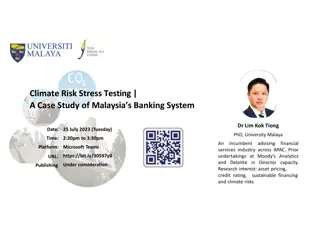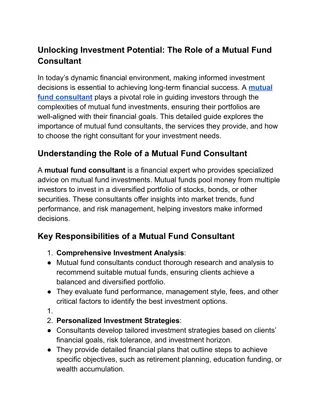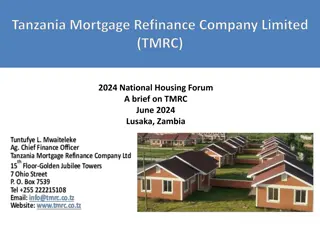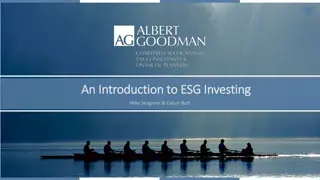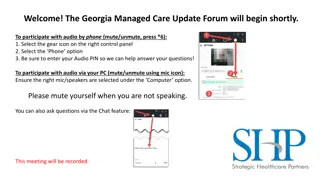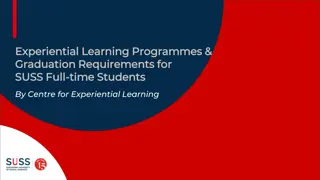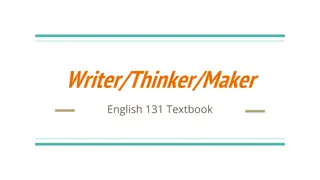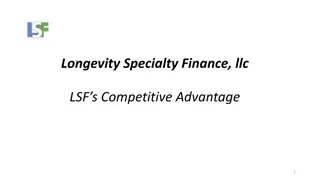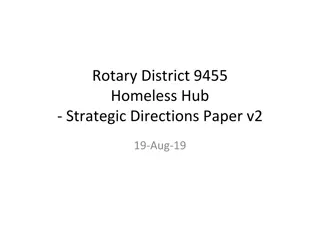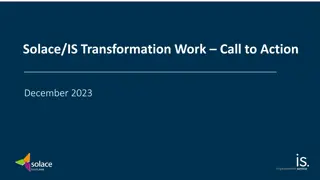TYPES OF PORTFOLIOS
Discover various types of portfolios such as Best Work, Growth, and Showcase portfolios along with guidelines for successful portfolio entries. Learn about Process, Evaluation, and Online portfolios. Explore the importance of determining purpose, physical structure, sources of content, and implementing portfolio assessments effectively. Gain insights into student self-evaluation, peer assessment, and teacher evaluation methods.
Download Presentation

Please find below an Image/Link to download the presentation.
The content on the website is provided AS IS for your information and personal use only. It may not be sold, licensed, or shared on other websites without obtaining consent from the author.If you encounter any issues during the download, it is possible that the publisher has removed the file from their server.
You are allowed to download the files provided on this website for personal or commercial use, subject to the condition that they are used lawfully. All files are the property of their respective owners.
The content on the website is provided AS IS for your information and personal use only. It may not be sold, licensed, or shared on other websites without obtaining consent from the author.
E N D
Presentation Transcript
TYPES OF PORTFOLIOS Best Work Portfolio: Highlights and shows evidence of the best work of learners used for assessing student s achievement, post-secondary admission and employability. Growth Portfolio: Demonstrates an individual s development over time. It focuses on academic or thinking skills, content knowledge or any other important area. Showcase Portfolio: Highlights the best products over a particular period or time. For example a showcase portfolio in a class may include writings (essay, poems, story etc), a biographical piece or a literary analysis.
TYPES OF PORTFOLIOS Process Portfolio: Concentrates on the journey of learning rather than the final destination. Evaluation Portfolio: Exhibits a series of evaluations of contents or courses on the basis of predetermined criteria or goals. Online or e-Portfolio: May be one of the above portfolio types or a combination of different types, a general requirement being that all information and artifacts are somehow accessible online
GUIDELINESFORPORTFOLIOSENTRIES Determine the purpose Identify physical structure Determine sources of contents Determine Students reflective guidelines and scoring criteria Implementing Portfolio Assessment Organizing a Portfolios Student self-evaluation of contents Peer assessment Teacher evaluation of content and student self- evaluation 10. Student-teacher conferences 11. Follow-up 1. 2. 3. 4. 5. 6. 7. 8. 9.
TEACHEREVALUATIONOFCONTENT Check list of content Portfolio Structure Assessment: Selection of samples thoroughness, appearance, self-reflection and organization Assessment of individual entries: use rubrics Assessment of entire content: use rubrics
FOLLOW-UP After portfolio is completed, it is a good idea to have an exhibition of portfolios and student led-parent-teacher conferences, in which students present their portfolios to their parents.





